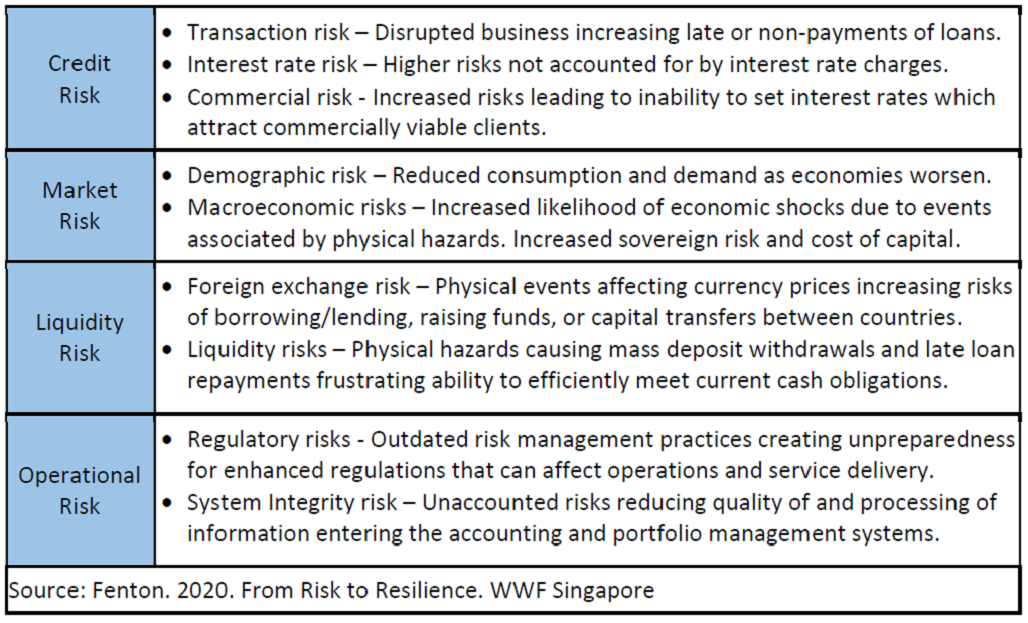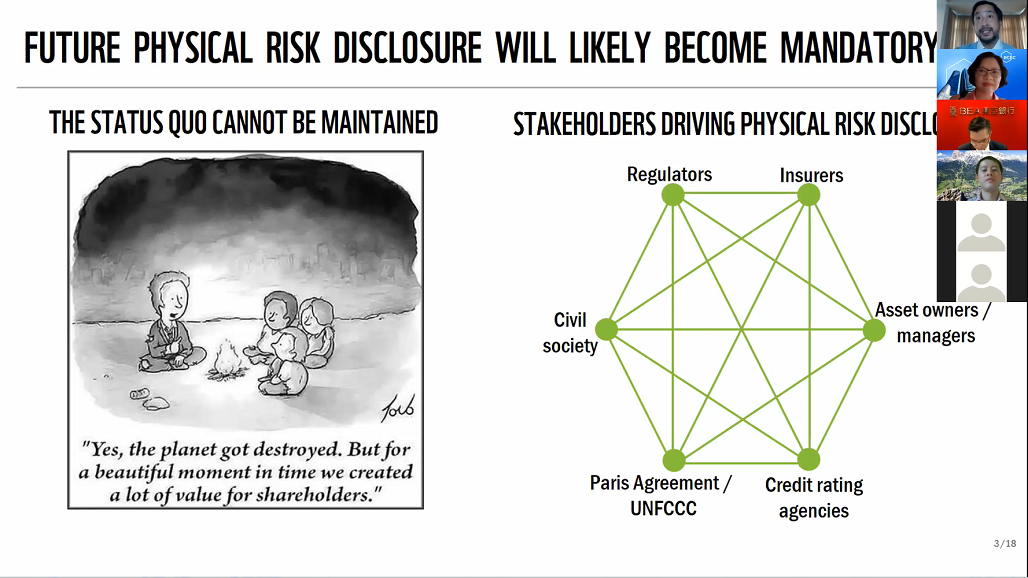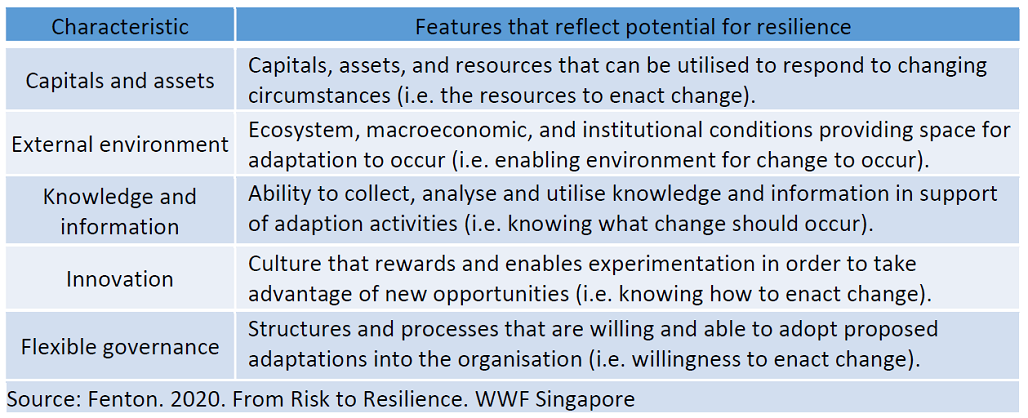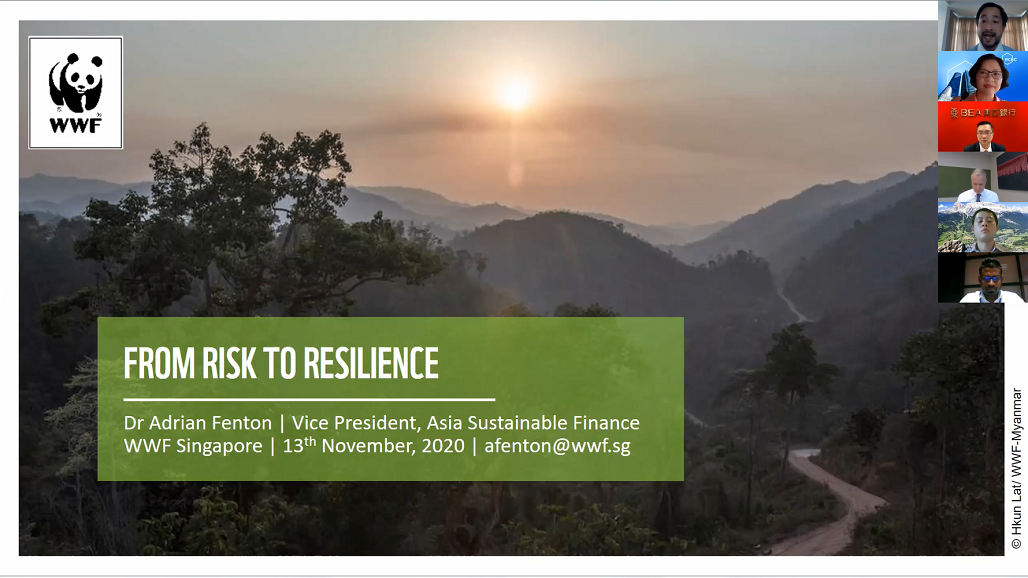ABA Position Paper on From Risk to Resilience: The Need for Asian Banks to Comprehensively Address Physical Climate Risks
From Risk to Resilience: The Need for Asian Banks to Comprehensively Address Physical Climate Risks
I. Introduction

II. What are physical risks?

III. Physical risks will increase for the foreseeable future
IV. Transmission channels of physical risk
- Changes in their magnitude and frequency of physical risks will be non-linear and Difficult to predict over the long-term.
- Surpassing ecosystem ‘tipping points’ will lead to rapid ecosystem change, yet understanding when these will be surpassed is difficult to know.
- As climate change increases historical climate and weather data will be less useful for predicting the future
- Physical risks are covariate with both localised and systemic impacts.


V. Identifying and projecting physical risk impacts?
VI. Physical risks are reduced through adaptation
- Material physical risk reduction is maximised according to best available science.
- Vulnerability of others is not increased.
- Measurable adaptation-related outcomes exist.

VII. Determinants of vulnerability and resilience

The presentation file can be downloaded HERE.

Dr. Adrian Fenton
Vice President, Asia Sustainable Finance
World Wide Fund for Nature (WWF) Singapore
i Source: IPCC. 2014.: Impacts, Adaptation, and Vulnerability. Part A: Global and Sectoral Aspects.
ii Source: EBRD. 2020. Advancing TCFD guidance on physical climate risks and opportunities.
iii Source: CDSB. 2017. Implementing the Recommendations of the TCFD.
iv Source: NGFS. 2020. Overview of Environmental Risk Analysis by Financial Institutions.
v Source: UNEP. 2016. The Adaptation Finance Gap Report.
vi Source: UNEP. 2020. Charting a New Climate: State-of-the-art tools and data for banks to assess credit risks and opportunities from physical climate change impacts.


